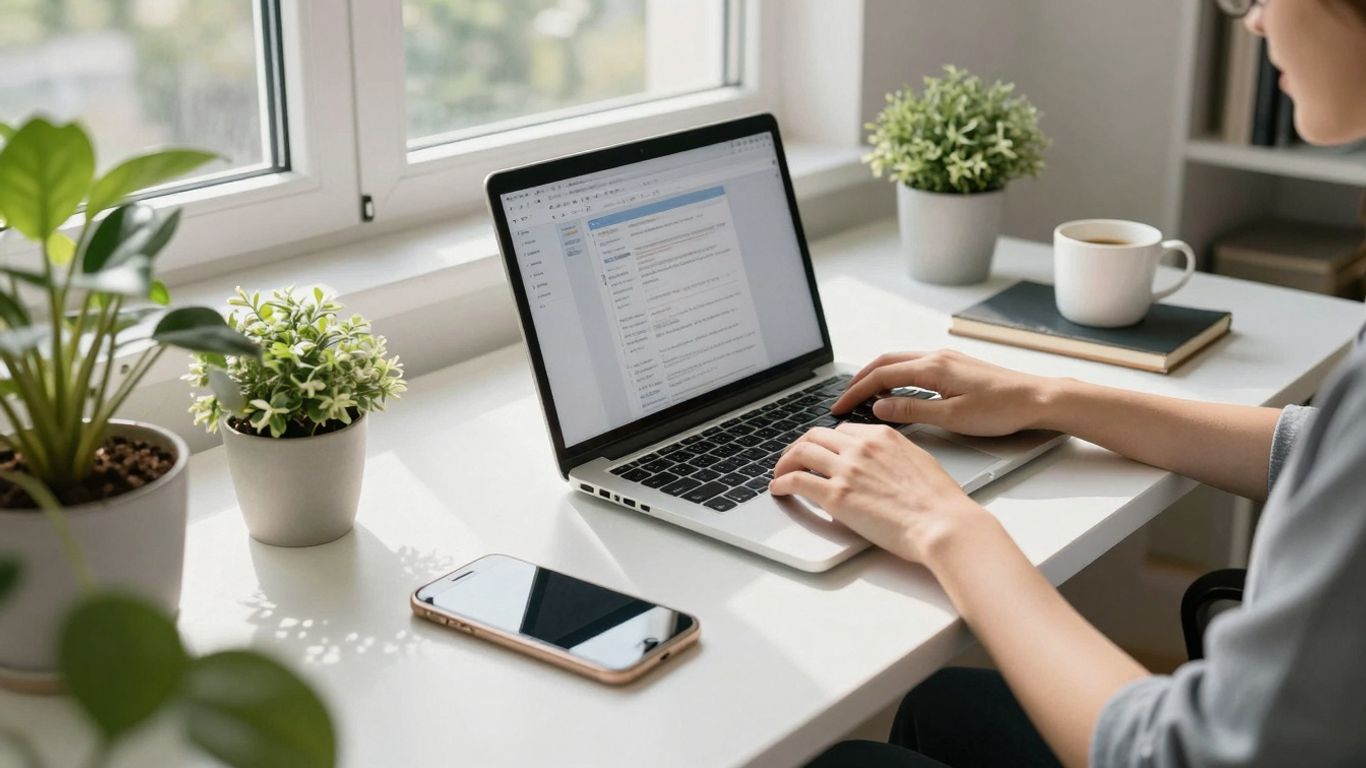Summer’s almost here, and that means pool time! Whether you’re opening up for the season or just getting started, now’s the perfect time to think about how to maintenance a pool. Keeping your pool in good shape means it’ll be clean, safe, and last for ages. We’ll walk you through the basics, from what your pool needs to a simple schedule, so you can enjoy that sparkling water all summer long.
Key Takeaways
- Regularly check and adjust your pool’s water level, aiming for the middle of the skimmer opening.
- Test your pool water daily for pH and sanitizer levels, treating it as needed to keep it clean and safe.
- Skim surface debris daily and clean skimmer baskets weekly to prevent clogs and keep the water clear.
- Brush your pool’s walls and floor weekly to loosen debris, then vacuum to remove it.
- Ensure good water circulation by running your pump for at least 8-12 hours a day and angling jets correctly.
Understanding Your Pool’s Essential Components
Alright, let’s get down to the nitty-gritty of what actually makes your pool tick. Knowing the different bits and pieces and what they do is half the battle when it comes to keeping things running smoothly. It’s not rocket science, but a bit of know-how goes a long way.
The Role of Pool Water
Think of your pool water as the main event. It’s what you’re actually swimming in, after all! Keeping it clean and balanced isn’t just about making it look nice; it’s about protecting you from nasty germs and also looking after your pool’s structure. Water that’s out of whack can cause all sorts of problems, from corrosion on metal parts to build-up on surfaces, which can shorten the lifespan of your whole setup. So, yeah, the water itself is a pretty big deal.
Maintaining Your Pool’s Interior Surfaces
This is basically the liner or plaster of your pool. It’s constantly in touch with the water and whatever else decides to float in. Keeping these surfaces clean and free from things like algae or grime is super important. It makes the pool look better, feel nicer underfoot, and stops those slippery patches from forming.
The Function of Your Pool Filter System
Your filter system is like the pool’s lungs and kidneys all rolled into one. It works with the pump to pull water out, clean it up, and then send it back. Without a working filter, all the dirt, leaves, and general gunk just hang around, making your pool cloudy and, frankly, a bit gross. There are a few types you might have:
- Cartridge Filters: These use a pleated filter that you can often rinse out.
- Sand Filters: These use special filter sand to trap debris.
- Diatomaceous Earth (D.E.) Filters: These use a powder that coats a grid, offering very fine filtration.
Each needs its own kind of care, but they all do the same job: keeping your water clear.
Skimmers and Returns: The Pool’s Veins
If the filter system is the organs, then the skimmers and returns are the plumbing. Skimmers are those openings, usually with a basket inside, that suck water off the surface – think of them as the pool’s mouth, taking in water for a clean-up. The returns are where the filtered water gets pushed back into the pool, like the pool’s arteries. Keeping these clear of leaves and other blockages means water can flow properly, which is key for the whole system to work efficiently.
Establishing Your Pool Maintenance Schedule
Alright, so you’ve got your pool, and you want to keep it looking spick and span without turning into a full-time job. The trick is to get a routine down pat. It might sound like a lot, but once you get into the swing of things, it’s pretty straightforward.
The Importance of a Regular Maintenance Routine
Think of it like this: if you only ever cleaned your kitchen once a month, it’d be a disaster, right? Your pool is much the same. Regular attention stops small issues from becoming massive headaches. It means less scrubbing later, fewer chemical dramas, and most importantly, water that’s always ready for a dip. Sticking to a schedule means you spend less time worrying about your pool and more time actually enjoying it. It also helps your equipment last longer, saving you coin in the long run.
Creating a Simple, Actionable Schedule
Don’t overcomplicate it. Grab a notepad or use your phone and jot down what needs doing and when. You can break it down like this:
- Daily: Quick checks – water level, skim any floating bits, maybe a quick glance at the filter pressure.
- Weekly: A bit more involved – brushing walls, vacuuming, cleaning out the skimmer basket, and testing the water chemistry. This is where you really get stuck in. Regularly brushing your pool walls weekly helps remove debris and particles missed by the filter. Incorporating algaecide weekly prevents algae growth, ensuring a cleaner and healthier swimming environment. Check your water chemistry.
- Monthly: Deeper cleans, checking equipment, maybe a more thorough filter clean.
Having a visual schedule, maybe stuck on the fridge or the pool shed door, makes it easy for everyone in the household to pitch in. Plus, it’s a good reminder for yourself when you’re busy.
Tips for Maintaining Your Pool While on Vacation
Going away? No worries. The best approach is to get a neighbour or a mate who knows their way around a pool to pop over every couple of days. Give them a simple checklist:
- Empty skimmer baskets.
- Skim the surface for any leaves or bugs.
- Check the filter pressure gauge and backwash if it’s too high.
- Test the water and add chemicals if needed (only if they’re comfortable with it).
If you’re really worried, or if no one can help, consider getting a pool cover. It keeps a lot of the junk out. Also, making sure your pump runs for at least 8-12 hours a day, ideally on a timer, is a lifesaver. It keeps the water circulating and the chemicals mixed, which is half the battle won. Getting your water tested and balanced right before you leave is also a smart move.
Daily Pool Care Essentials
Keeping your pool in top nick doesn’t have to be a massive chore. A few minutes each day can make a huge difference, stopping small issues from turning into big, expensive headaches. Think of it like giving your car a quick once-over before a long trip – it just makes everything run smoother.
Checking and Adjusting Water Levels
Your pool’s water level is pretty important. Too low, and your pump could suck in air, which isn’t good for it. Too high, and it might not filter properly. The sweet spot is usually halfway up the skimmer opening. You can check this by marking a spot on your tiles or steps. Water loss is normal, mostly from evaporation and splashing, usually about an inch or so a week. If it drops more than that, top it up with the garden hose. Easy peasy.
Testing and Treating Your Pool Water
This is where you become the pool doctor. You’ll want to test your water daily, especially during hot weather or if you’ve had a lot of swimmers. The main things to keep an eye on are pH and your sanitizer levels (like chlorine).
Here’s a quick rundown of what you’re aiming for:
- pH: Between 7.4 and 7.8. This affects how comfortable the water is for swimmers and how well your sanitizer works.
- Sanitiser (e.g., Chlorine): Aim for the recommended range for your specific type of sanitizer. This is what kills off all the nasty stuff.
- Alkalinity: Generally between 100-130 ppm. This helps keep your pH stable.
If your levels are off, you’ll need to add chemicals to bring them back into line. Don’t just chuck them in willy-nilly; follow the instructions on the product packaging.
Remember, balanced water isn’t just about looks; it’s about safety and protecting your pool equipment from damage.
Skimming Surface Debris
See those leaves, bugs, or bits of grass floating on top? They need to go. Grab your leaf skimmer (the net on a pole) and give the surface a quick sweep. If you leave this stuff to sink, it’ll just break down, use up your sanitizer, and can make your water cloudy. It only takes a minute or two, but it really helps keep things clean.
Weekly Pool Cleaning Tasks
Alright, so you’ve got the daily stuff sorted, which is great. But to really keep your pool looking its best and prevent bigger headaches down the track, you’ve got to get into a weekly cleaning rhythm. This is where you tackle the bits that build up over the week and keep things running smoothly.
Brushing Underwater Surfaces
Think of this as giving your pool walls and floor a good scrub. Over time, especially in those spots where the water doesn’t move much, you can get a bit of grime or even the start of algae. A good brush gets rid of this before it becomes a real problem. You want to brush everything – the walls, the steps, the floor, and around any fittings. Aim to do this at least once a week. It might seem like a bit of effort, but it makes a huge difference to water clarity and stops algae from taking hold.
Vacuuming Your Pool
Even with skimmers working, some bits and pieces inevitably sink to the bottom. Leaves, dirt, maybe even a rogue bug – they all end up on your pool floor. Vacuuming sucks all this up. You can get manual vacuums that attach to your skimmer or even automatic pool cleaners that do the hard yakka for you. How often you need to vacuum really depends on what’s going into your pool. If you’ve got a lot of trees, you might need to do it more than once a week. Otherwise, a weekly vacuum should keep things tidy. It’s a good idea to check your pool filter regularly too, as a clogged filter will slow down your vacuuming.
Cleaning Skimmer Baskets
These little baskets are the first line of defence against debris. They catch leaves, twigs, and other gunk before it gets into your filter system. If they get too full, they can’t do their job properly, and your pool’s circulation can suffer. You should aim to empty and give them a quick rinse at least once a week. If you have a lot of trees or windy weather, you might find yourself needing to check them more often, maybe even a couple of times a week. It’s a simple job, but it’s super important for keeping your pool water moving freely.
Keeping on top of these weekly tasks means your pool will be much easier to manage day-to-day. It’s all about preventing problems before they even start, so you can just relax and enjoy your pool.
Mastering Pool Chemistry
Keeping your pool water balanced might sound a bit like a science experiment, but honestly, it’s not that scary once you get the hang of it. Think of it like looking after a pet – you need to check in regularly and make sure everything’s just right. The most important tool in your arsenal is your water testing kit. You wouldn’t cook a meal without tasting it first, right? Same idea here. Before you start chucking chemicals in, test your water to see what it actually needs.
So, what are we actually testing for? There are a few key players:
- pH Levels: This tells you if your water is acidic or basic. You want it to be just right, not too much of either. The sweet spot is usually between 7.4 and 7.6. If it’s too low, it can be harsh on your skin and eyes, and if it’s too high, well, that’s not great either.
- Alkalinity: This is like a bodyguard for your pH, stopping it from bouncing around too much. Aim for somewhere between 100 and 150 parts per million (ppm). If it’s low, a bit of baking soda can help bring it up.
- Sanitiser Levels: This is usually your chlorine, keeping all the nasty germs at bay. The right amount depends on what type of sanitiser you’re using, but generally, you want to keep it topped up.
Once you’ve got your readings, you can start adding chemicals. Just take your time, read the labels carefully, and know what each chemical does before you add it. It’s all about making sure the water is safe and pleasant for everyone.
The Significance of Water Testing
Testing your pool water is the absolute first step in keeping it clean and safe. Without knowing what’s going on in there, you’re just guessing, and that can lead to all sorts of problems. Unbalanced water can irritate swimmers, damage your pool surfaces, and even cause equipment to corrode. It’s like trying to fix a leaky tap without knowing if it’s the washer or the pipe that’s the issue – you’ll probably make it worse.
Regular testing means you can catch small issues before they become big, expensive problems. It’s proactive care for your pool.
Key Chemical Balance Parameters
Let’s break down the main things you need to keep an eye on:
| Parameter | Ideal Range | Why it Matters |
|---|---|---|
| pH | 7.4 – 7.6 | Affects swimmer comfort, sanitiser effectiveness, and prevents corrosion. |
| Total Alkalinity | 100 – 150 ppm | Buffers pH, preventing rapid fluctuations. Low levels can cause pH to drop. |
| Free Chlorine | 1 – 3 ppm | Kills bacteria and algae, keeping water sanitary. |
| Calcium Hardness | 200 – 400 ppm | Protects pool surfaces (plaster, vinyl) from damage due to water imbalance. |
| Phosphates | As low as possible | Nutrients that fuel algae growth; high levels make algae control difficult. |
Understanding Pool Shock Treatments
Sometimes, your regular sanitiser just needs a bit of a boost. This is where pool shock comes in. Think of it as a super-strength dose of sanitiser that helps clear out all the gunk swimmers leave behind – like sweat, oils, and lotions – and also tackles any algae trying to get a foothold. It’s especially useful after heavy use, a big storm, or if your chlorine levels have dropped to zero. It’s best to add shock in the evening so the sun doesn’t break it down too quickly before it can do its job. Always follow the product instructions for the best results.
Optimising Pool Circulation
Think of your pool’s circulation system as its lifeblood. It’s not just about moving water around; it’s about keeping everything clean, balanced, and healthy. Without good circulation, you’re asking for trouble, like algae blooms and cloudy water. Making sure your water is always on the move is a big part of keeping your pool in top shape.
Ensuring Proper Water Movement
Good circulation means the water in your pool is constantly being drawn into the filter and then returned, clean, back into the pool. This process helps distribute chemicals evenly and prevents stagnant spots where nasties can grow. It’s a bit like making sure every part of your pool gets a fresh breath of air. You want to avoid any ‘dead spots’ where water just sits there. These are prime real estate for algae.
Ideal Pump Run Times
How long should your pump be running? For most pools, aiming for 10 to 12 hours a day is a good starting point, especially during warmer months when you’re using the pool more. Some people even run theirs 24/7, but that’s not always practical or necessary. You can use a timer to automate this, making it a set-and-forget task. If you’re noticing issues like cloudy water or algae, you might need to increase the pump’s run time. It’s worth checking out pool maintenance tips to see what works best for your setup.
Adjusting Pool Jets for Better Flow
Those return jets aren’t just for show; they play a role in circulation too. Pointing them downwards at about a 45-degree angle, away from the skimmer, can help create a consistent flow pattern. This helps push debris towards the skimmer and ensures water reaches all corners of the pool. It’s a simple adjustment that can make a noticeable difference in how well your water moves.
Here’s a quick rundown of what to check:
- Skimmer Baskets: Empty these regularly. They catch the big stuff before it gets to your filter.
- Pump Operation: Listen to your pump. Is it running smoothly? Is the water flow strong?
- Jet Direction: Make sure your return jets are angled to promote water movement, not just swirling in one spot.
Keeping your skimmer baskets clean is a small task that has a big impact on circulation. When they’re full, water can’t get through easily, slowing down the whole system. It’s like trying to drink through a straw that’s blocked with a piece of paper.
Essential Pool Maintenance Tools
Alright, let’s talk about the gear you’ll need to keep your pool looking its best. You can’t just wing it with pool maintenance; having the right tools makes all the difference. It’s not about having a million fancy gadgets, but the basics done well.
Essential Cleaning Equipment
To keep your pool free of gunk and grime, you’ll want a few key items. First up is a good pool brush. This isn’t your shower brush; it’s designed to scrub away algae and dirt from your pool’s walls and floor. Make sure you get one that’s suitable for your pool’s surface – some are tougher than others. Then there’s the trusty vacuum. Whether it’s a manual one you push around or an automatic cleaner, it’s your go-to for sucking up debris from the bottom. Don’t forget a skimmer net, too. It’s perfect for grabbing leaves, bugs, and other floating bits before they sink and make more work for the vacuum. A telescopic pole is a lifesaver here, letting you reach all corners of the pool without a struggle. Some folks even wrap their skimmer baskets in pantyhose to catch finer particles – a bit of a hack, but it works!
Water Testing Kits and Supplies
This is probably the most important bit. You wouldn’t cook without tasting, right? Same goes for your pool. You need a reliable water testing kit. These kits let you check things like pH, alkalinity, and sanitizer levels. Knowing these numbers is half the battle in keeping your water balanced and safe. Most kits use either test strips or liquid reagents. Strips are quick and easy, while liquid kits can be a bit more precise. Whatever you choose, get familiar with the ideal ranges for each parameter. It’s all about keeping things in check so your pool stays inviting and your equipment doesn’t get damaged.
Chemicals for Water Balance
Once you know what your water needs from your testing kit, you’ll need the chemicals to fix it. This includes things like pH increasers or decreasers, alkalinity adjusters (often baking soda), and your main sanitizer, usually chlorine. You might also need calcium hardness increaser and stabiliser. It sounds like a lot, but once you get into a routine, it’s pretty straightforward. Always add chemicals one at a time, following the instructions carefully, and never mix them together. It’s also a good idea to have some pool shock on hand for those times when your regular sanitizer needs a boost, especially after heavy use or a big storm. Remember to shock your pool in the evening so the sun doesn’t burn off the treatment too quickly.
Keeping your pool clean and balanced isn’t just about looks; it’s about protecting your investment and ensuring a healthy swimming environment. Having the right tools and knowing how to use them makes the whole process much less of a chore and more of a satisfying routine.
Getting started with pool maintenance can feel like a lot, but having the right gear makes it manageable. If you’re looking to set up a pool service business, having a solid understanding of these tools is a great starting point for all the required equipment.
Your Pool, Your Pride
So there you have it. Keeping your pool in top nick doesn’t have to be a massive chore. By sticking to a bit of a routine – a quick check here, a brush there – you’ll keep that water looking inviting and feeling fresh all summer long. It’s not about becoming a pool guru overnight, just about getting into the swing of things. Soon enough, you’ll be the one everyone asks for advice, and you’ll be able to just kick back and enjoy your sparkling oasis without a second thought. Happy swimming!
Frequently Asked Questions
How often should I check my pool’s water level?
You should check your pool’s water level every day. If it drops more than an inch below the middle of your skimmer opening, you’ll need to add more water. Evaporation and splashing can cause the level to drop about an inch or so each week.
What are the most important chemicals to keep balanced in my pool?
The key chemicals to keep an eye on are pH and alkalinity. You want your pH to be between 7.4 and 7.8, and alkalinity between 100 and 130 parts per million. Keeping these balanced helps your other chemicals, like chlorine, work better and keeps your pool safe.
Why is it important to brush my pool’s walls and floor?
Brushing the pool surfaces helps get rid of any sliminess or grime that builds up. This loosened stuff can then be easily vacuumed out. Even if you can’t see anything, brushing helps prevent algae from taking hold in those spots.
How long should my pool pump be running each day?
Your pool pump and filter system should ideally run for about 8 to 12 hours every day. This ensures the water is constantly moving and getting cleaned, which helps stop problems like cloudy water and algae before they start.
When is the best time to ‘shock’ my pool?
It’s best to shock your pool at night. The sun’s rays can break down the chemicals in shock treatment too quickly during the day, making it less effective. Letting it work overnight ensures it gets a chance to do its job properly.
What are the basic tools I need to maintain my pool?
You’ll need a few essential tools: a pool brush for scrubbing surfaces, a vacuum to suck up debris, a skimmer net for floating bits, and a water testing kit to check your chemical levels. A long pole to attach these to makes reaching everything much easier.




